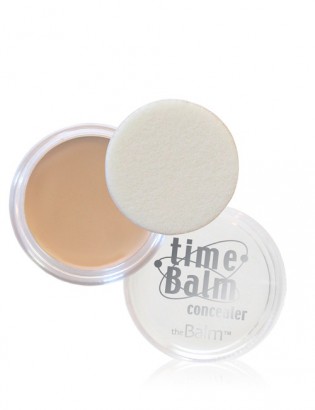Go Undercover: 3 Types of concealers and how to use them
mis à jour le 6 October 2015 à 23:02
From creams to liquids to correctors, it's easy to get confused with which product is best for you. Read on for our tips on how to choose your ideal concealer.
In some cases, less is really more. And when it comes to hiding imperfections such as dark under eye circles, scars or blemishes, we're always looking for a way to create maximum impact with minimum effort. It's possible to do just that by simply understanding what products work for your concerns.
To get started, here are some tips on what types of nifty camouflage products you should look out for and the common mistakes to avoid.
CREAM CONCEALER
Usually the more pigmented concealers come in cream form. They are also typically presented in a pot or palette that will last you ages after you've purchased it. Cream concealers are great for covering up parts of the face that have suffered hyperpigmentation and dark spots from blemishes that have long healed but still leave a mark. Application and blending with your ring finger can be an easy, quick escape from the morning rush, while a small dense brush or sponge can help you with a more precise and professional application. A good cream concealer that dries matte can also double up as an eyeshadow base for brighter colour payoff.
LIQUID CONCEALER
Liquid concealers are prefect for days when you prefer not to cake your whole face with foundation but still want to handle the widespread scar problem at hand. If you have many dark spots spread over a larger area of your face such as the forehead or cheeks, look for concealers that come in a squeeze tube, brush, sponge, or felt-tip applicator. These can be applied with fingers as well or blended out with a stippling brush. Concentrate the product on the most problematic areas and blend outwards to create a seamless finish between the makeup and bare skin.
CORRECTORS
It's time to shed some light on those oddly-coloured products that are placed in the skin aisle alongside foundations and other concealers. These yellow, green or orange creams are colour correctors, which help to neutralise pigmented areas of the face by using adjacent colours. For example, if you have a red blotchy patch anywhere on the skin, a green corrector can be applied directly to the affected area to neutralise the pinkish hue and then layered with a skin-toned concealer on top. For dark, blue or purplish under eyes, apply either a yellow or orange colour corrector only to the area with the pigmentation and top with concealer. Always keep in mind to use colours directly opposite of each other on the colour wheel to properly neutralise the hues.
TOP TIP
Don't use luminizers or liquid highlighters as concealer. These are great to brighten up parts of the face that have unnecessary shadow, but not the best for covering dark parts caused by pigmentation under the surface of the skin. Using luminizer on dark spots and blemishes will only highlight the imperfections. A good way to brighten up any obvious unwanted shadow (such as under the eyebag, laugh lines or on the inner and outer corners of the eye) is to take a small brush and apply some luminizer only on the line that creates the shadow. Blend softly to finish.
We've gathered some amazing products that you can start with in our gallery above. Now that you know what your best concealer is, you'll never forget to keep it covered!
Nur Syazana H.



